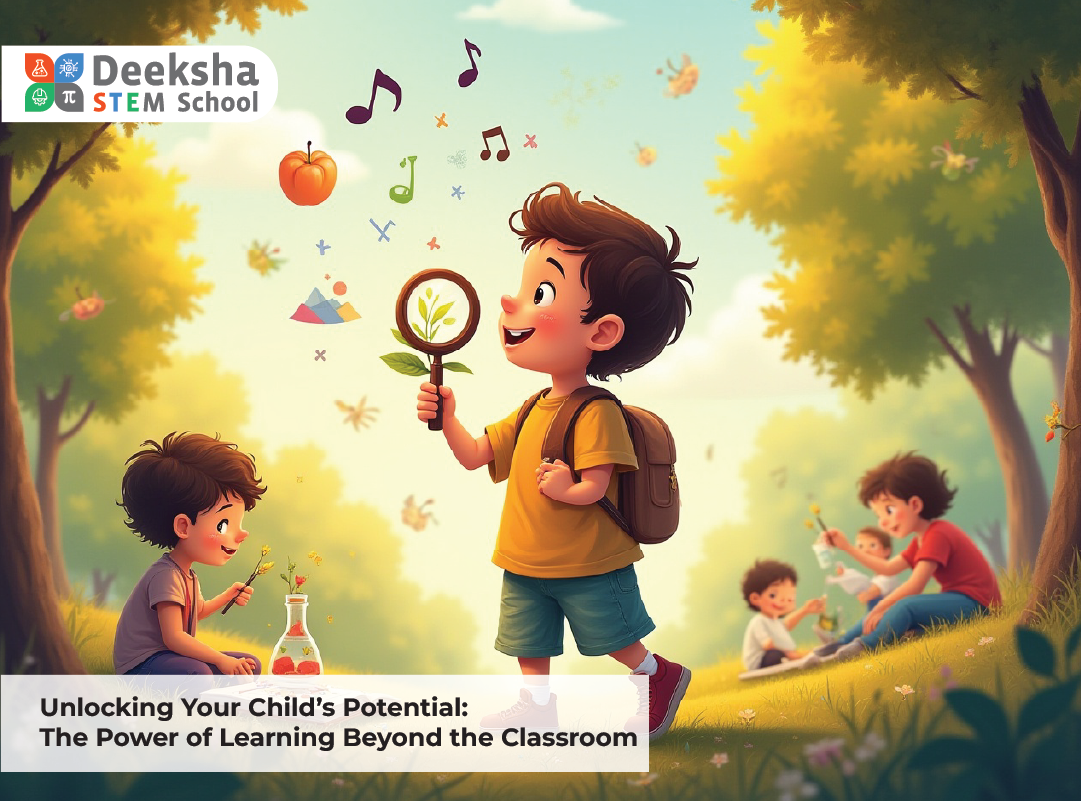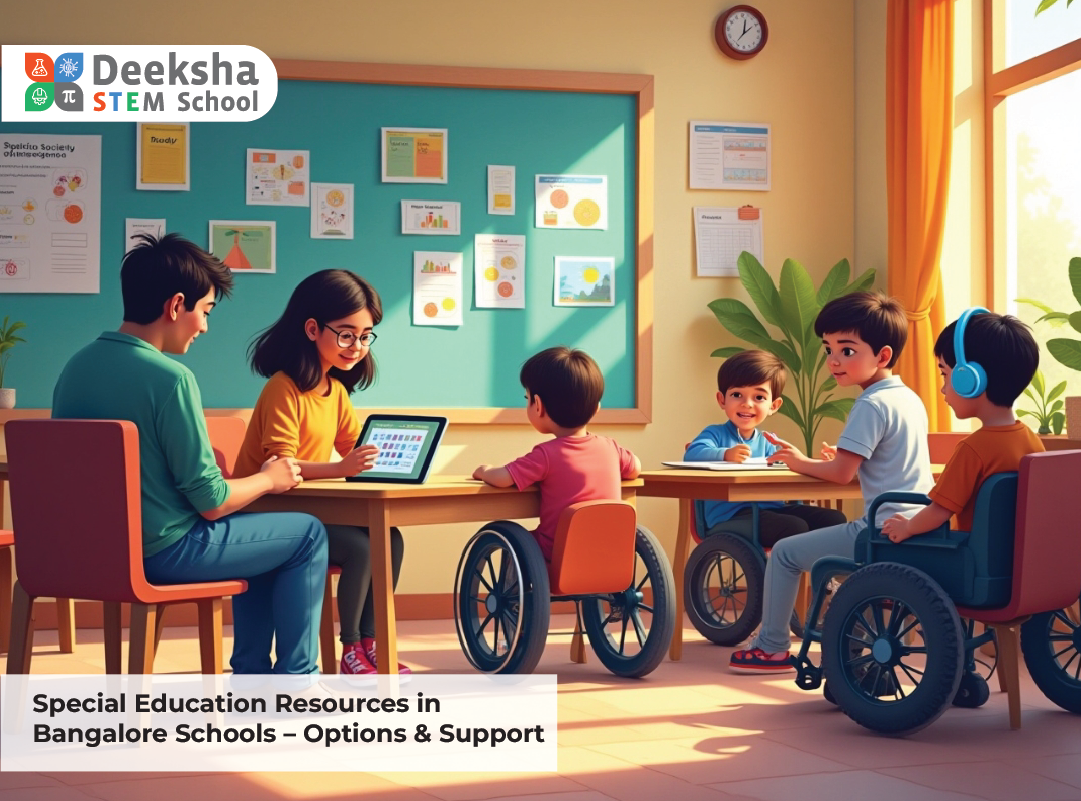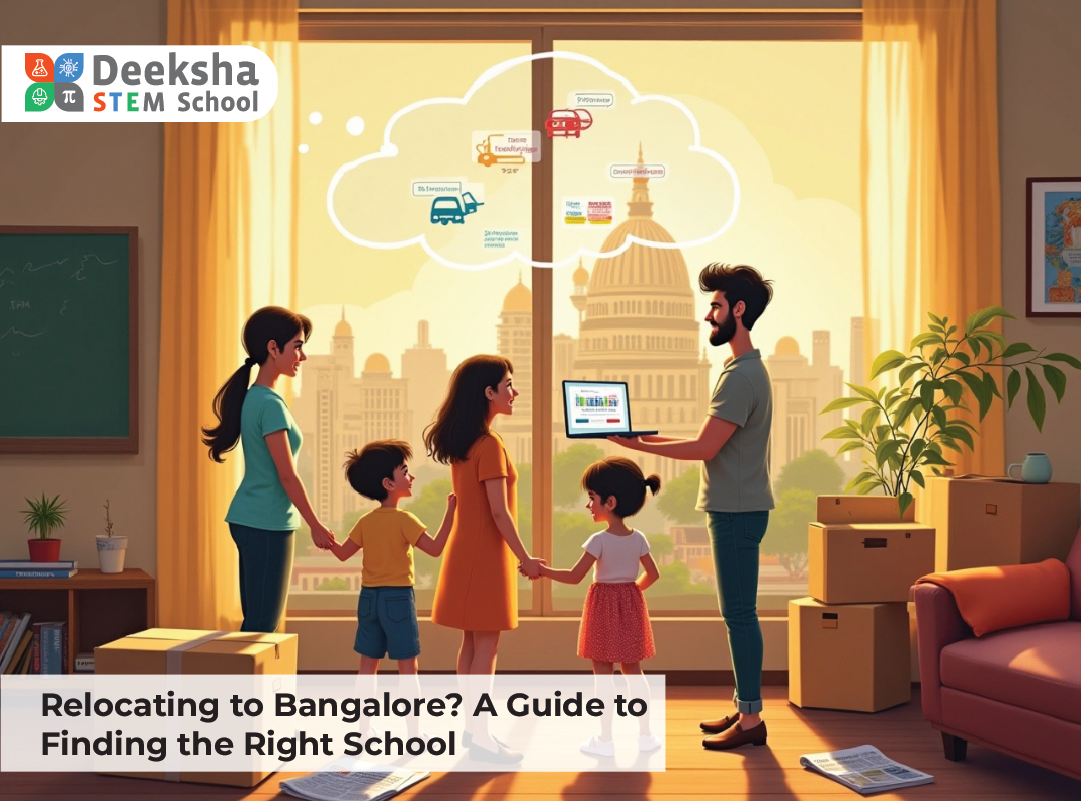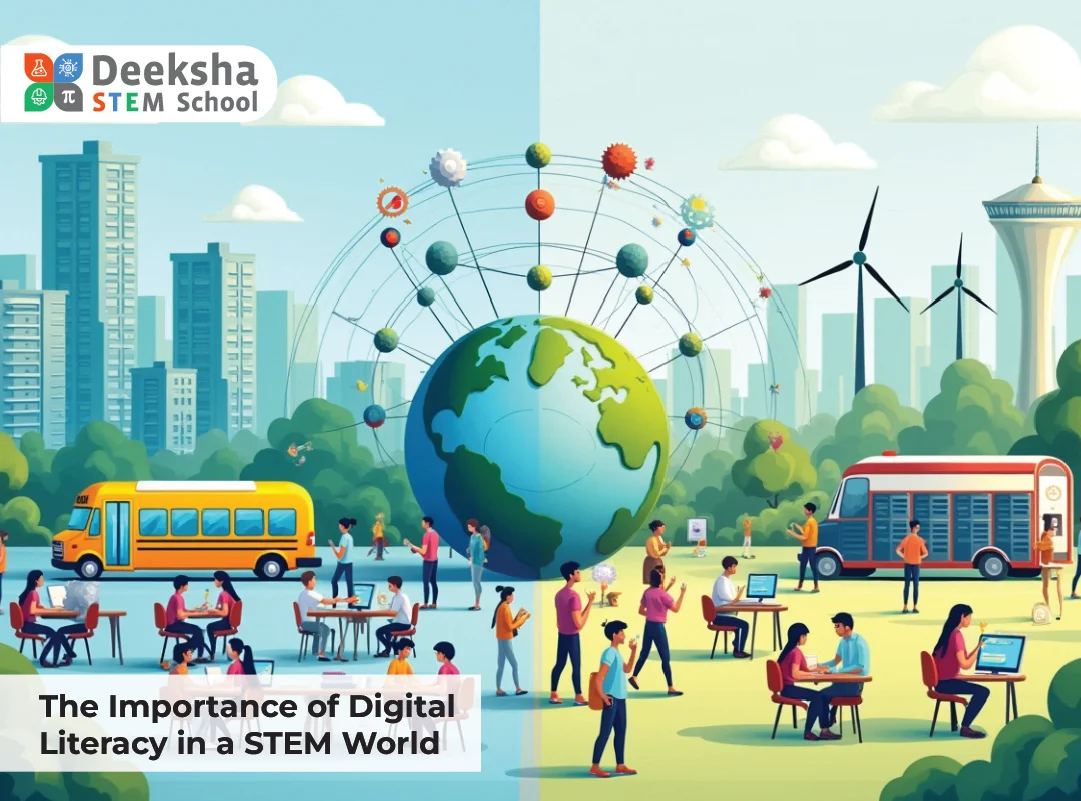Why Hands-On STEM Learning Beats Traditional Classroom Learning
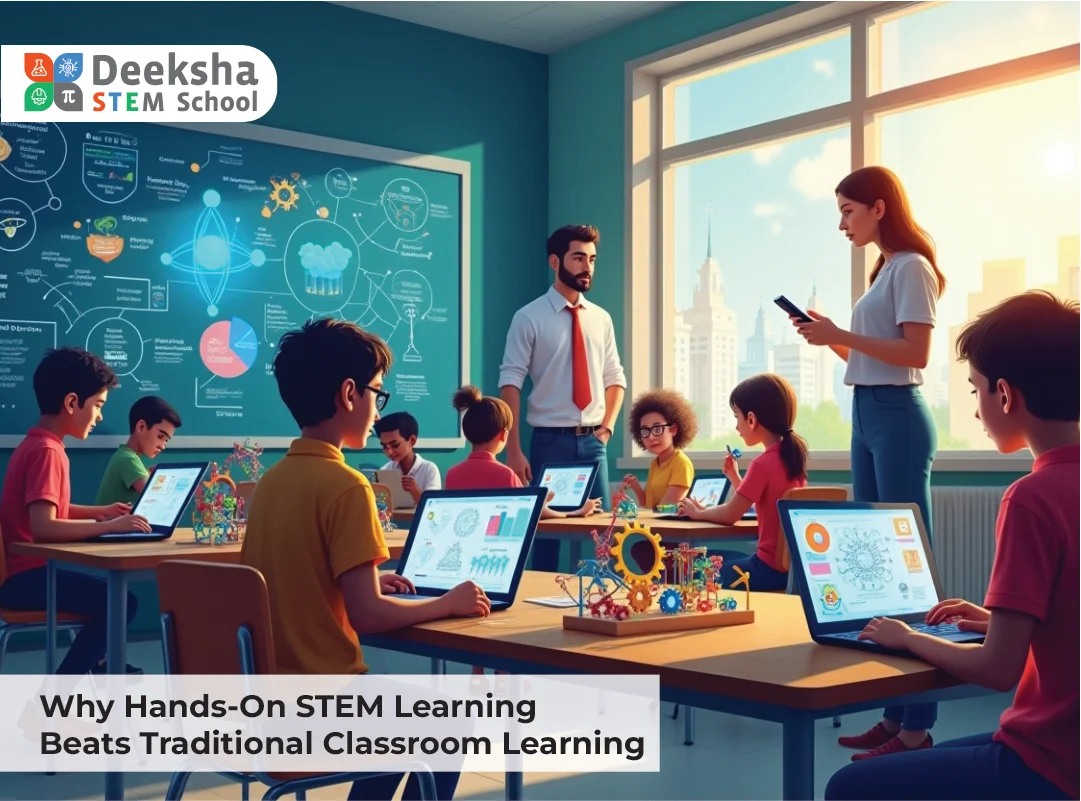
Traditional classroom learning has long focused on rote memorization and passive absorption of knowledge, often leaving students ill-prepared for the demands of modern problem-solving and innovation. This approach prioritizes standardized testing over fostering curiosity and critical thinking, which are essential for adapting to rapidly changing technological and professional landscapes. However, hands-on STEM (Science, Technology, Engineering, and Mathematics) learning has emerged as a transformative approach, emphasizing active engagement, creativity, and real-world problem-solving. At Deeksha STEM Schools, we champion experiential learning to prepare students for a dynamic and technology-driven world.
Active Engagement vs. Passive Learning
Traditional Classroom Limitations
- Relies heavily on lectures and textbook-based teaching.
- Limited opportunities for students to interact with the material or apply concepts practically.
- Focuses on exam preparation rather than fostering critical thinking.
Hands-On STEM Advantages
- Encourages students to actively engage with concepts through experiments, design challenges, and collaborative projects. For example, students might design and test a model bridge to understand load distribution or collaborate on a coding project to create an interactive game, turning theoretical knowledge into tangible outcomes.
- Bridges the gap between theoretical learning and real-world applications, making knowledge tangible and meaningful.
- Cultivates curiosity and enthusiasm by involving students in dynamic, hands-on activities.
Developing Critical Skills Through Hands-On Learning
Problem-Solving and Innovation
- STEM projects challenge students to think critically and creatively to devise innovative solutions to real-world problems.
- Example: Building a prototype for a sustainable energy source teaches physics principles and engineering design.
Collaboration and Communication
- Hands-on projects often require teamwork, teaching students essential interpersonal skills like communication, conflict resolution, and leadership.
- Example: Group robotics challenges encourage collaboration and collective problem-solving.
Resilience and Adaptability
- Experiential learning involves trial and error, helping students embrace failure as a learning opportunity.
- Example: Iterating on a coding project fosters persistence and adaptability.
Real-World Relevance of Hands-On STEM Learning
Career-Ready Skills
- STEM programs integrate modern tools like coding platforms, robotics kits, and 3D printers, equipping students with industry-relevant skills. These tools are particularly valuable in fields such as software development, robotics engineering, renewable energy, healthcare technology, and artificial intelligence, where demand for skilled professionals continues to grow.
- Example: Learning to use AI tools prepares students for careers in emerging technology fields.
Connecting Learning to Global Challenges
- Hands-on STEM projects address pressing global issues, such as climate change, renewable energy, and healthcare innovation.
- Example: Designing water filtration systems for underserved communities provides both practical experience and social impact.
Why Deeksha STEM Schools Lead the Way
- Innovative Curriculum: Combines CBSE excellence with immersive STEM activities to offer a holistic educational experience.
- State-of-the-Art Facilities: Fully equipped labs and maker spaces allow students to experiment, prototype, and innovate.
- Guided by Expert Educators: Experienced teachers provide mentorship, fostering both academic excellence and creative exploration.
Conclusion
Hands-on STEM learning surpasses traditional classroom methods by actively engaging students, fostering critical skills, and connecting education to real-world challenges. At Deeksha STEM Schools, we redefine education by integrating experiential STEM programs with a strong academic foundation. Enroll today to give your child a future-ready advantage and a lifelong love of learning.

